
FEATURE — Since the English began colonizing what is now the United States, their general policy was to separate themselves from the Native Americans, living apart from them and not intermingling. Toquerville, however, bucked that trend.
Apparently, the Paiute Chief Toquer invited settlers of The Church of Jesus Christ of Latter-day Saints to settle among his people and teach them how to farm.
John D. Lee led the first exploring party to what is now Toquerville in 1852 and wrote a letter to Willard Richards that was published in the “Deseret News” on August 7, 1852. He wrote:
“A few days ago we had a visit from the Toquer Indian Captain with about 30 of his warriors, who wished to hold counsel with us upon the subject of forming a settlement in their country. … They met us with the warmest of Indian friendship. They recognized me on sight and said I had been in their country and promised to settle there.”
Contradicting his earlier assertion, Lee mentioned at the end of the same letter that the Native Americans had anxiety about the settlers moving in.

Pioneer settlement didn’t come immediately, however. Another exploring party came in 1857 and deemed the area fit for settlement due to the mild weather (which in some accounts was mistakenly identified as “semi-tropical”) and because Ash Creek and a nearby spring supplied enough water.
Settlement ultimately began in 1858 when Joshua T. Willis of Fort Harmony was called to lead the settlement 30 miles south of Cedar City along Ash Creek and joined by the families of Wesley Willis, Josiah Reeves, John M. Higbee, Samuel Pollock and a “Mr. Brown,” Douglas Alder and Karl Brooks wrote in their book “A History of Washington County: From Isolation to Destination.”
The group named their settlement after Chief Toquer, a Paiute word meaning “black,” which was fitting for a location at the base of hills peppered with black volcanic rock.
“The group was well received by Chief Toquer and began immediately to set out fields and start farming in the warm climate,” Alder and Brooks wrote. “They soon were raising squash, melons, grapes, figs, sweet potatoes, cotton and alfalfa.”
A plaque displayed on the grounds of the Toquerville Town Hall sings its namesake’s praises, saying:
“Chief Toquer was considered by early settlers as an enlightened Indian, a friend with clean habits. He showed great love and concern for his people, encouraging them to learn and grow with the times by welcoming outsiders into their land.”
Rhea Wakeling and Irma Jackson offered interesting information about Toquerville’s early days in the section they wrote about it for the book “Under the Dixie Sun” published by the Washington County Chapter of the Daughters of Utah Pioneers in 1950. Wakeling and Jackson wrote that the first plow in the town was fashioned from old wagon tires. The first homes were made of logs filled with mud.
At first, Wakeling and Jackson reported, Ash Creek was akin to a ditch that one could jump across but as a result of storms and erosion over the years, it became more significant. However, the lack of water discouraged some of the earliest settlers, causing them to move to Kanarraville.
In 1859, nineteen families were living in Toquerville. And by 1864, the community had grown to 41 families. At first, the town received its mail from Cedar City, but gained a post office, the first one south of Cedar City, in 1859.
Early surveys of the town layout indicate that streets were “laid out to conform to the terrain of the valley and the course of the creek rather than the cardinal points of the compass,” Wesley Larsen wrote in his book, “A History of Toquerville, Volume II.”
Larsen also wrote about the construction of a sawmill in the Pine Valley mountains about 12 miles northwest of Toquerville in the early 1860s, which made building wooden homes easier and more comfortable than the previous log and mud structures.

Also in the early 1860s, John Nebeker moved to the town where he raised cotton and built and operated a cotton gin, apparently the first one in the state of Utah. In the early 1870s, Nebeker served as a probate judge of Kane County. Due to that position, the story goes that all properties in Toquerville were deeded to Nebeker and then deeded back to their respective occupants, Larsen wrote.
“This insured legal title and explains why the name ‘John Nebeker’ appears on all of the abstract deeds,” Larsen noted.
In 1867 a telegraph office opened in the town, meaning residents would not have to go on a long trip to communicate with Salt Lake City.
Wakeling and Jackson wrote that on one of Brigham Young’s trips to Toquerville in the 1860s, upon catching sight of the town, he said, “Oh, it is so green and beautiful in its summer verdure.”
A clipping in the “Deseret News” in 1868, written by early resident Martin Slack and quoted in “Under the Dixie Sun” said:
“Peace dwells in the hearts of the people, everyone busy, no loafer, no office seekers, no gambling saloons, no drunkard in our town. We all mind our own business — all well and helping to build Zion, the city of our God.”
Toquerville organized a cooperative wool producing association and did try to live the United Order, but failed after only a few months.
According to Alder and Brooks’s account, Toquerville became a focal point for much of the development of the Virgin River Valley. The settlement of Virgin, Rockville, Shunesburg, Grafton, Springdale, LaVerkin and Hurricane stemmed from Toquerville. It became the location of the first telegraph office south of Cedar City and even served as the Kane County seat for a few years before the county boundaries were realigned in 1883 and it became part of Washington County.
In their account, Alder and Brooks called the town “quite stable” between 1900 and 1910.
“Although people in Toquerville were among the promoters of the Hurricane Canal, they had a good source of water and did not venture beyond the town,” Alder and Brooks wrote. “When Hurricane lands were opened up, 80% of the people of Toquerville stayed put.”
The townspeople constructed Toquer Hall in 1866, which Erastus Snow dedicated as a church. The old church building located at the south end of town that has now been restored and converted into the Town Hall was built in 1879.

The Naegle Winery
One of the most noticeable and storied buildings in Toquerville is the “Naegle Big House,” which once served as a winery, located at the very south end of the main drag along SR 17. On assignment from President Brigham Young, who wanted to make wine for export sale, John C. Naegle received the proper license and built the structure in 1868 for his wine-making pursuits (basement) and for his family’s residence (upper floors).
Naegle was a native of Bavaria and served in the Mormon Battalion. Once the battalion members were relieved of their duties, he stayed in a California to earn a little money before returning to the Utah Territory. He was at Sutter’s Fort when gold was discovered.
“As a faithful member of his church he obeyed the teachings of his leaders and returned to Utah,” the Washington County Historical Society web page states of Naegle. When (Brigham Young) found that Naegle was a trained wine-maker he issued a call for him to go to Toquerville and establish a wine-making industry. It was Young’s intentions to supply the church with sacramental wine and have a cash crop to sell to those passing through on their way to California.”

Naegle secured distilling equipment from California and brought in several five hundred gallon barrels to store and age the product as well as 40-gallon casks for shipping it.
“Perhaps the proudest feature of the building was its size,” the WCHS web page stated. “Naegle often boasted that a wagon and team could drive in, unload, and then turn around and drive out. His product, ‘Nail’s Best,’ was considered the premium wine of the territory.”
In addition to wine, he also made brandy from peaches and did some ranching, having interests on the Kaibab Plateau and near St. Johns, Arizona.
Wine became a medium of exchange, was used in payment of tithes, and was sent to the mining towns of Pioche, Nevada and Silver Reef, Utah.
The Church eventually ceased wine production and Naegle left Toquerville in 1889 to pursue other interests in Mexico and to escape federal prosecution for practicing polygamy (he had seven wives). The building was vacant until the early 20th century when it housed canning and distribution operations for locally grown figs and peaches, the historic plaque on the building notes. Later it was used for peach de-fuzzing as well as to store grain, hay and farm machinery. Steven and Rosa Williams renovated it in 1980 as a residence and today it is the property of Annaley Redd, a Naegle descendant, according to the WCHS website.
Toquerville Today
With its tree-lined main drag (Toquer Blvd. or SR 17, whichever one would like to call it) graced by old restored homes and buildings, Toquerville is an inviting, quaint town with a proud history that boasts many reminders of pioneer ingenuity and fortitude. Its history is encapsulated inside and outside its town offices. Originally a church built in 1879, the building has been restored with an addition added in back for the town’s offices.

The WCHS devoted a page on its website commending Toquerville residents for restoring the church, especially residents Bob and Virginia Olsen for their tireless work put into the remodeling and decorating. Inside the building, old photos of past residents and events are on display framed with wood from old Toquerville barns and homes, all made by Bob Olsen.
“Lace curtains cover the windows while heavy red-orange colored velvet curtains frame the sides,” the WCHS website notes. “ These curtains along with two large handmade quilts help act to silence the echo that can be present in this old building. The wood floors still exist and were refinished.”
The front of the building boasts a monument honoring those who served in the military from Toquerville as well as the “Jail Rock,” apparently used to chain up prisoners in the early 1860s. It also includes an old wagon and farm equipment on display next to a plaque honoring the town’s namesake, Chief Toquer.
Interestingly, some have even called into question the existence of an actual Chief Toquer. For instance, Larsen reported in his book that Wakeling, one of the authors of the section on Toquerville in the 1950 DUP book, is one of those who discount the chief’s existence. But by the same token, some have called into question some of the information in Larsen’s book.
Like many favorite pioneer stories passed down from generation to generation, some of them could very well be “apocryphal.”
About the series “Days”
“Days” is a series of stories about people and places, industry and history in and surrounding the region of southwestern Utah.
“I write stories to help residents of southwestern Utah enjoy the region’s history as much as its scenery,” St. George News contributor Reuben Wadsworth said.
To keep up on Wadsworth’s adventures, “like” his author Facebook page or follow his Instagram account.
Wadsworth has also released a book compilation of many of the historical features written about Washington County as well as a second volume containing stories about other places in Southern Utah, Northern Arizona and Southern Nevada.
Read more: See all of the features in the “Days” series.
Photo Gallery
This portrait of John C. Naegle, who built the "Big House" that served as a winery, appears on a plaque on the restored building today, Toquerville, Utah, Oct. 1, 2019 | Photo by Reuben Wadsworth, St. George News This historic photo shows the the Naegle Home and Winery before its restoration in 1980, Toquerville, Utah, 1968 | Photo courtesy of Washington County Historical Society, St. George News The front of the restored Naegle Winery as it appears today, Toquerville, Utah, Oct. 1, 2019 | Photo by Reuben Wadsworth, St. George News The north side of the old Naegle Winery, Toquerville, Utah, Oct. 1, 2019 | Photo by Reuben Wadsworth, St. George News The Naegle Winery, shown from its northeast corner, stands as the most vivid reminder of Toquerville's early days, Toquerville, Utah, Oct. 1, 2019 | Photo by Reuben Wadsworth, St. George News Toquerville's church, built in 1879, was restored and added upon to become the Town's offices, Toquerville, Utah, Oct. 1, 2019 | Photo by Reuben Wadsworth, St. George News An old wagon and farm implements are on display on the grounds of Toquerville's Town Hall, Toquerville, Utah, Oct. 1, 2019 | Photo by Reuben Wadsworth, St. George News A plaque honoring Toquerville's founders and the Old Jail Rock on the grounds of Toquerville's Town Hall sit as reminders of the town's early history, Toquerville, Utah, Oct. 1, 2019 | Photo by Reuben Wadsworth, St. George News Toquerville honors its war veterans with this marker on the grounds of its Town Hall, Toquerville, Utah, Oct. 1, 2019 | Photo by Reuben Wadsworth, St. George News The Thomas Forsyth home, built in the "vernacular" style in the 1860s or 1870s uses stones gathered from a nearby hill for its exterior. The story goes that the family chose to use these stones because they were small enough that their children could carry them, Toquerville, Utah, Oct. 1, 2019 | Photo by Reuben Wadsworth, St. George News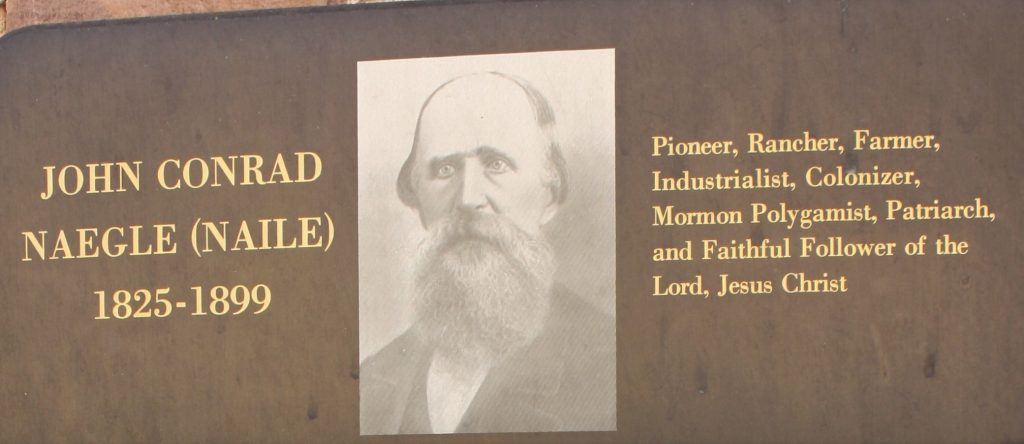
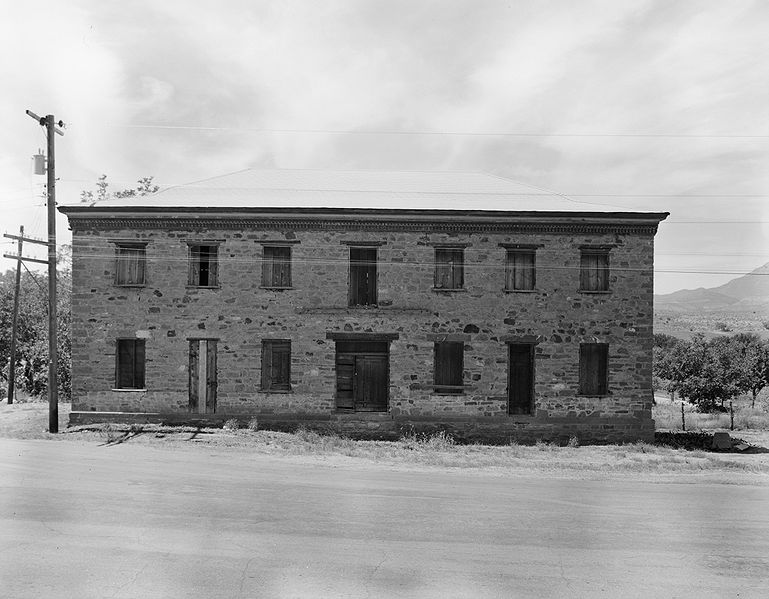


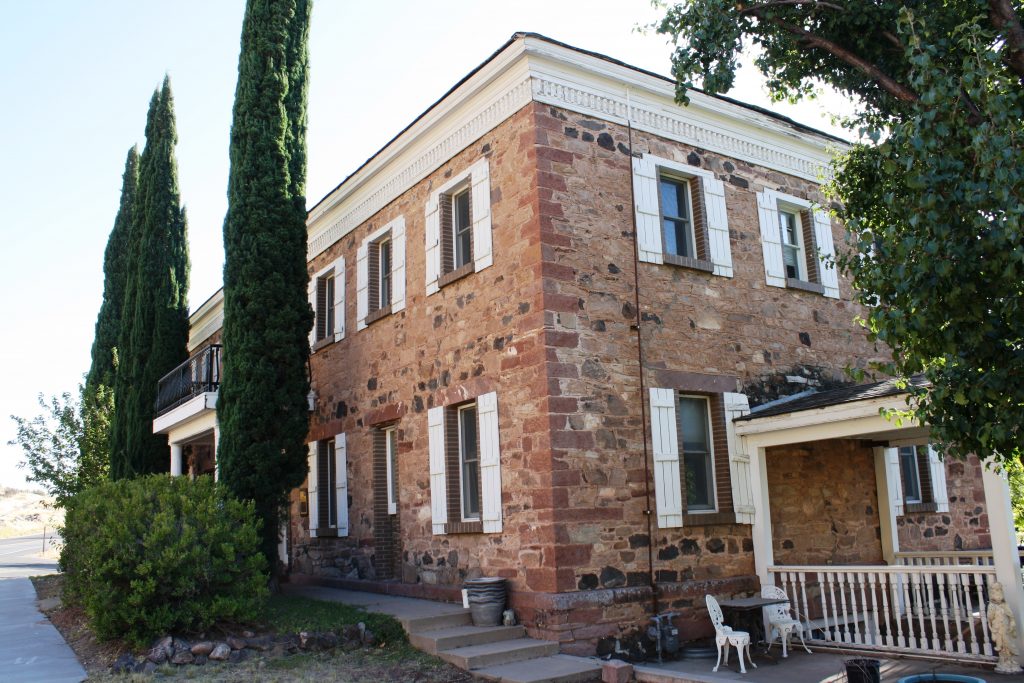
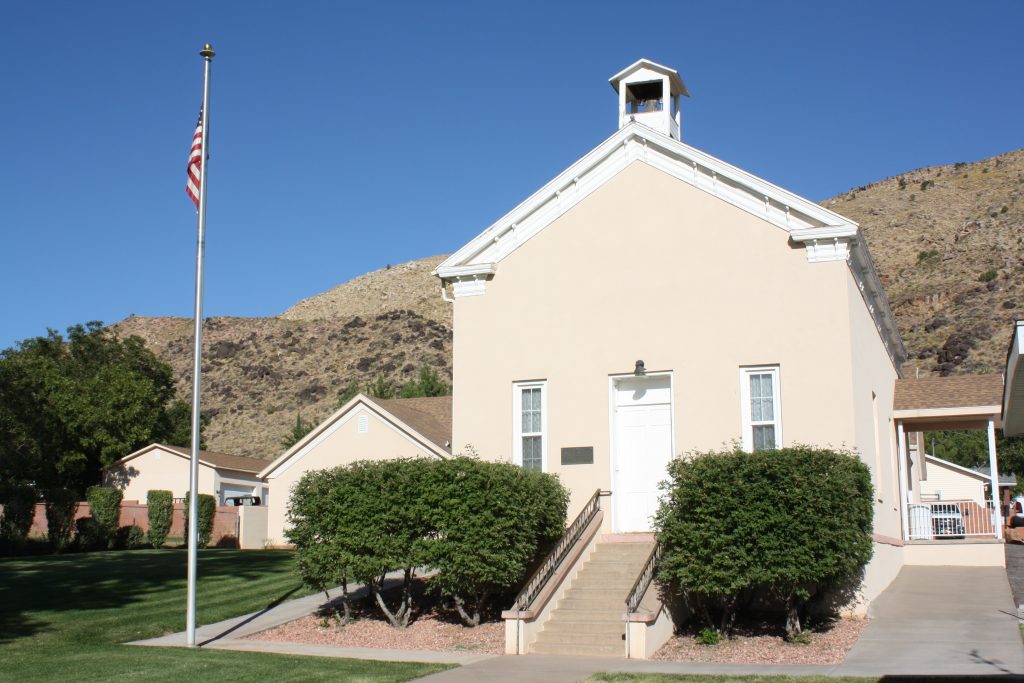
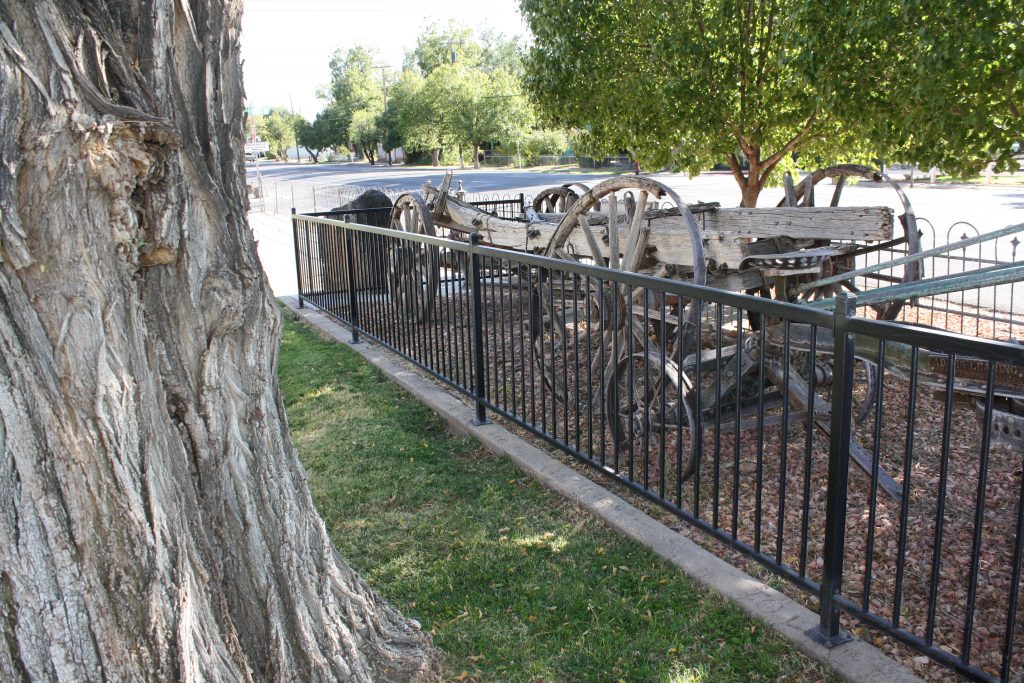



Email: [email protected]
Twitter: @STGnews
Copyright St. George News, SaintGeorgeUtah.com LLC, 2022, all rights reserved.
